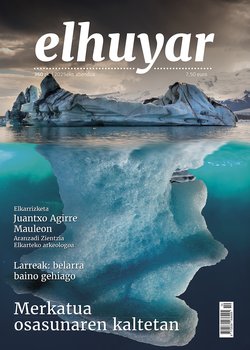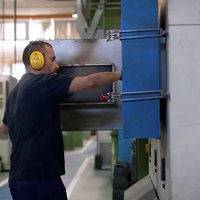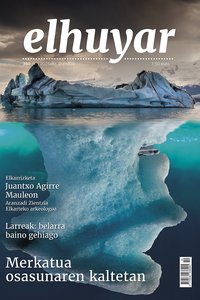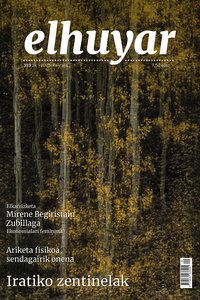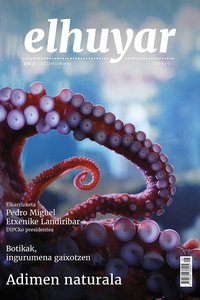Sentinels of Irati
The results have been released this year, although the samples were collected a dozen years ago. The aim of the study was to measure the concentration of pollutants coming from the air, unless they were present in one of the largest beech trees in Europe: In the Irati. Researchers from the two Pyrenees were involved, and it is regrettable that they do not have the opportunity to continue their research. This does not underestimate the work done. In fact, among other things, they have shown that lichens and mosses are ideal for measuring air pollutants and knowing where they come from. In addition, they confirm the importance of taking care of Irati.
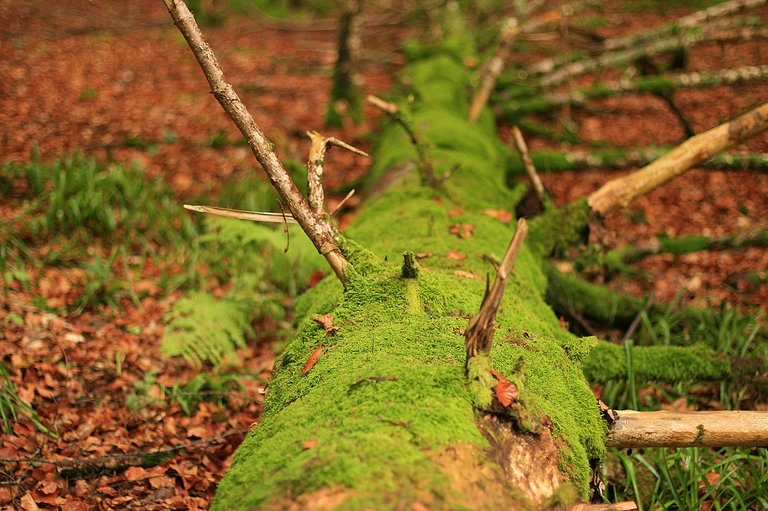
The study on the contamination of lichens and mosses in the Irati forest has been published in the journal Atmospheric Pollution Research, specialized in air pollution. David Elustondo, scientific director of the Valencia Bioma Institute, is one of the researchers who, as soon as he starts talking about this work, praises the value of the Irati forest: “Irati is a symbol of the Basque Country. It is the second largest beech forest in Europe and it should be noted that it is located on the southern border of the beech forests. It has a high level of protection, so it is of great interest to researchers and has been the subject of numerous studies. The pollutants that we wanted to study, however, are very difficult to analyze, as they are in very low concentrations and require special equipment and specialized training.”
This is what the IBEA Group specializes in. This is confirmed by the chemist Dr. Alberto de Diego Rodríguez, member of this group: “We are analytical chemists and have been studying chemical pollutants, both organic and inorganic, in different environments: atmosphere, estuaries, water, sediments, etc. So for us, it was part of the overall investigation. Now, as David has said, Irati is a symbol, and since it is far from major sources of pollution, it is interesting to know what pollutants are and how many, and where they come from.”
The focus was on persistent organic pollutants, and lichens and mosses were selected for analysis. De Diego gives the reason: “After all, these species feed on what they take from the atmosphere and accumulate significant concentrations of air pollutants during their lifetime. So they work as sentinels; in a way, the pollutants we measure in them are related to the concentration in the atmosphere.”
Lichens and mosses are also used in studies carried out elsewhere and therefore allow the comparison of results. Iratin, Parmelia sulcata licena and Hypnum cupressiforme moss have been used as bioindicators and biomonitors. Elustondo explains why: “Lichens and mosses are biomonitors, that is, they accumulate pollutants in proportion to their concentration in the atmosphere. However, lichens are generally more susceptible to contamination and therefore disappear when the contamination increases. Therefore, depending on the presence or absence of lichen, we can know if a place is infected or not. In this case, they act as bioindicators. But others are less sensitive and are able to accumulate contaminants, that is, they are biomonitors. For our study, we looked for species capable of accumulating contaminants so that we could see different concentrations within the forest.”
Elustondo explains that the compounds studied in Irati are toxic and appear everywhere, “even in the Arctic and Antarctica”. Some of them are currently banned, but because they are persistent, they can still be measured at significant concentrations. Three types of compounds were analyzed: PAHs (aromatic polycyclic hydrocarbons; especially produced in combustion processes); PCBs (polychlorinated biphenyls; used in electrical insulation and currently banned); and OCPs (organochlorine pesticides; commonly used in agriculture and currently banned).
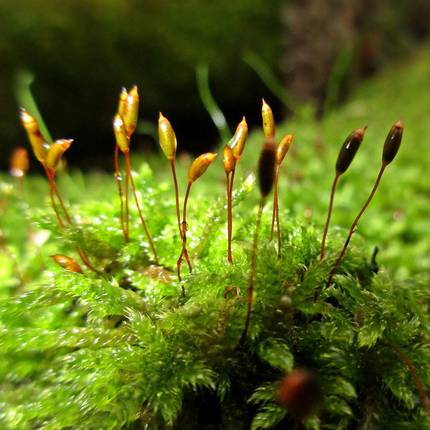
Origin of the contamination
The sampling was carried out in 50 points distributed throughout Irati, from the road from Izaba (Navarra) to Urdazubi or Santa Grazi (Zubero) to Roncesvalles. “These roads are frequented by quite a few vehicles, especially in summer, due to tourism. They are therefore a relatively important source of local pollution, especially PAH. In fact, PAHs are mainly produced in combustion, such as fossil fuel combustion,” said de Diego. He added another source: “The fires they make—theoretically, under control—to burn grass and shrub. They may be closer, but they may also be more distant.”
Thus, analyses have shown that PAH concentrations are significantly higher than those of the other two types of pollutants. In any case, de Diego has made it clear that there are many factors that influence the spread of pollutants: “Some factors are obvious, and there are the weather, the direction of the winds... But it is not always easy to know exactly why there is a certain concentration in a certain place. Our hypothesis was that some would emerge nearby and others would come from far away, which we have confirmed.”
Elustondo points out that PAHs are quite toxic: “In fact, 16 of them are considered carcinogenic by the U.S. Department of the Environment.” It also notes that biomass is also an important source and that, in addition to the burns mentioned by de Diego, pellet stoves should also be considered: “If you don’t have a controlled output, you’re pouring PAHs into the air.”
In this sense, a study carried out in Bertiz confirmed that one hundred years ago the concentration of PAH was much higher, due to the charcoal plants and the heaters of the houses. “Today all this has gone down a lot, and in Irati they have also restricted the circulation of vehicles. In my opinion, it is a good measure to control pollution.”
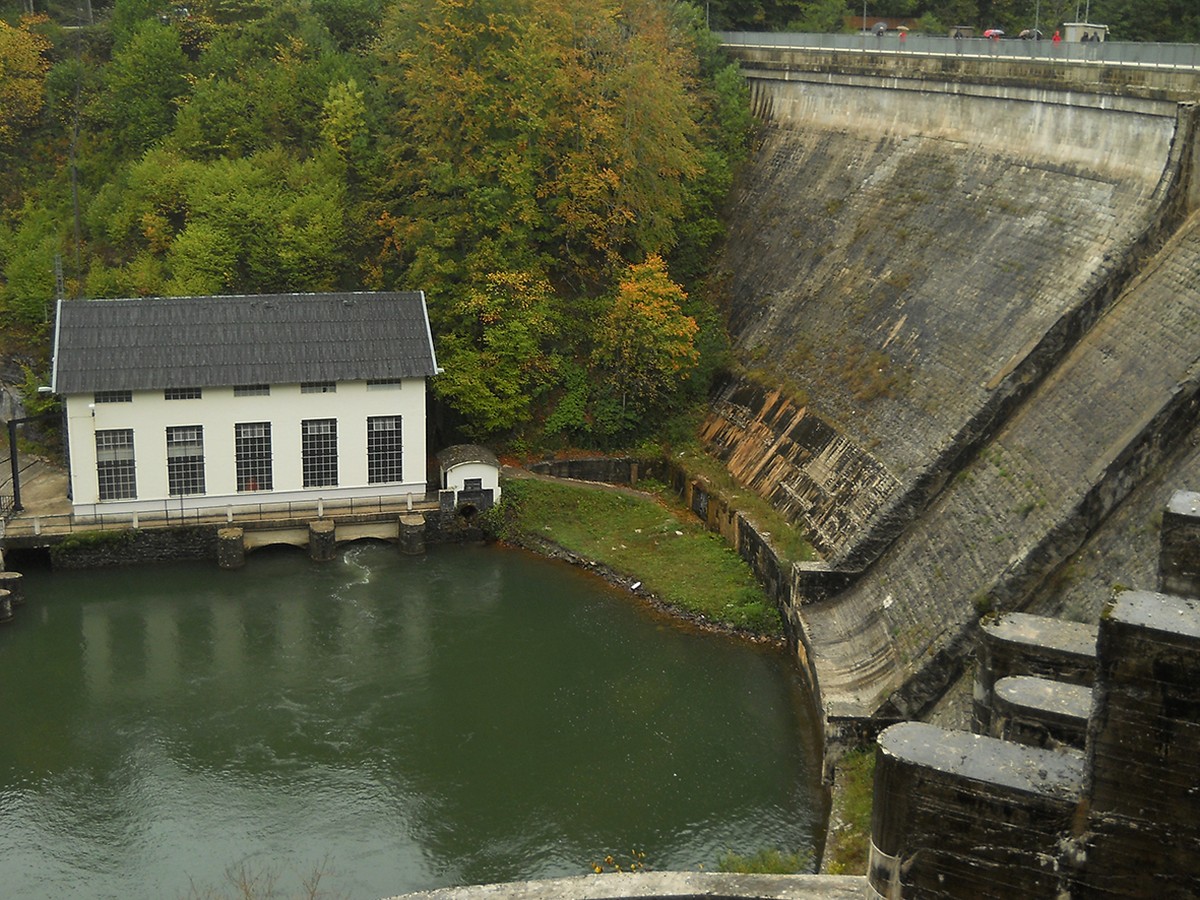
However, Iraq continues to receive pollution from distant cars and industry. For example, in these studies in Bertiz, it has been observed that the western wind brings high concentrations of PAH from Gipuzkoa and Bizkaia, and that it also arrives from France, crossed by the Pyrenees with the northern wind.
On the other hand, unlike PAHs, PCBs are chemical compounds: “They are xenobiotic; that is, they are created by man,” Elustondo says. Since they have been shown to be toxic, they have been banned for a long time. The researchers believe that the discoveries in Irati would have come from the Irabia power station, a material that was once used in electrical insulators.
Finally, they come from pesticides used by OCPA in agriculture. “They are very diverse, and they are also prohibited today, but they are persistent and very toxic,” de Diego said. Compare persistent pollutants with heavy metals: “Although today the Basque industry emits less heavy metals, the one of the previous decades does not disappear; it accumulates in the soil. It can stay there for a long time without reaching the water or the vegetation, but if the soil moves, the other environments will also be polluted.”
The importance of research
Both de Diego and Elustondo point out that the concentrations measured in Irati are not higher than expected: “You have to be careful with the message that is delivered. In fact, the current alarmist trend is very damaging. It must be clearly stated that although the contamination is worrying, it cannot be said that Irati is infected. It has a high level of protection and that’s how it should be,” says de Diego. Elustondo, in succession: “This study should serve to demonstrate the importance of valuing and preserving this type of ecosystem.”
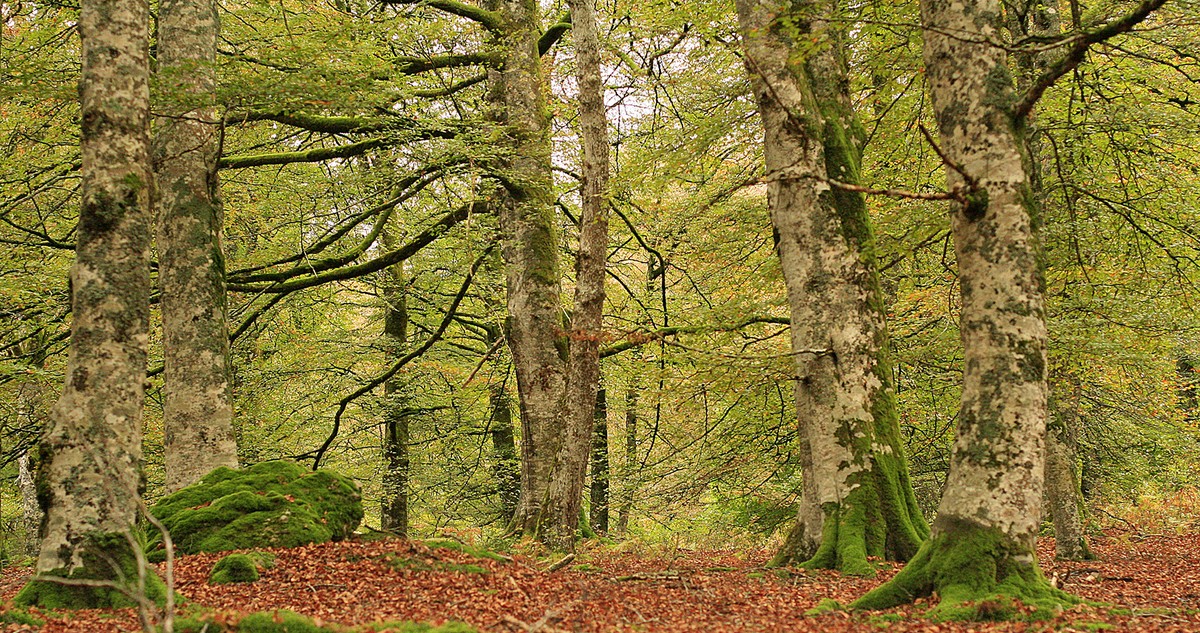
He mentions an advantage of mosses for monitoring: “It’s much cheaper to study natural mosses in the forest than to install equipment that needs to work next. These measurements are not used to provide legal limits, but they are used to make comparisons and find out what the hot spots are, for example.”
As a result, both are seeking long-term funding for this type of research. Indeed, the study of the impact of pollutants on biodiversity requires long series.
They also believe that the impact of several other factors and their interrelationships should be investigated. These include, notably, climate change: “We know that this particular ecosystem will suffer with the increase in temperature, which makes it more likely that other actors will also have a greater impact,” said Elustondo. It recalls the impact of air quality and climate on human health: “Among the causes of death, air pollution is the fourth. This is a public health problem that will get worse with climate change because they are related.”
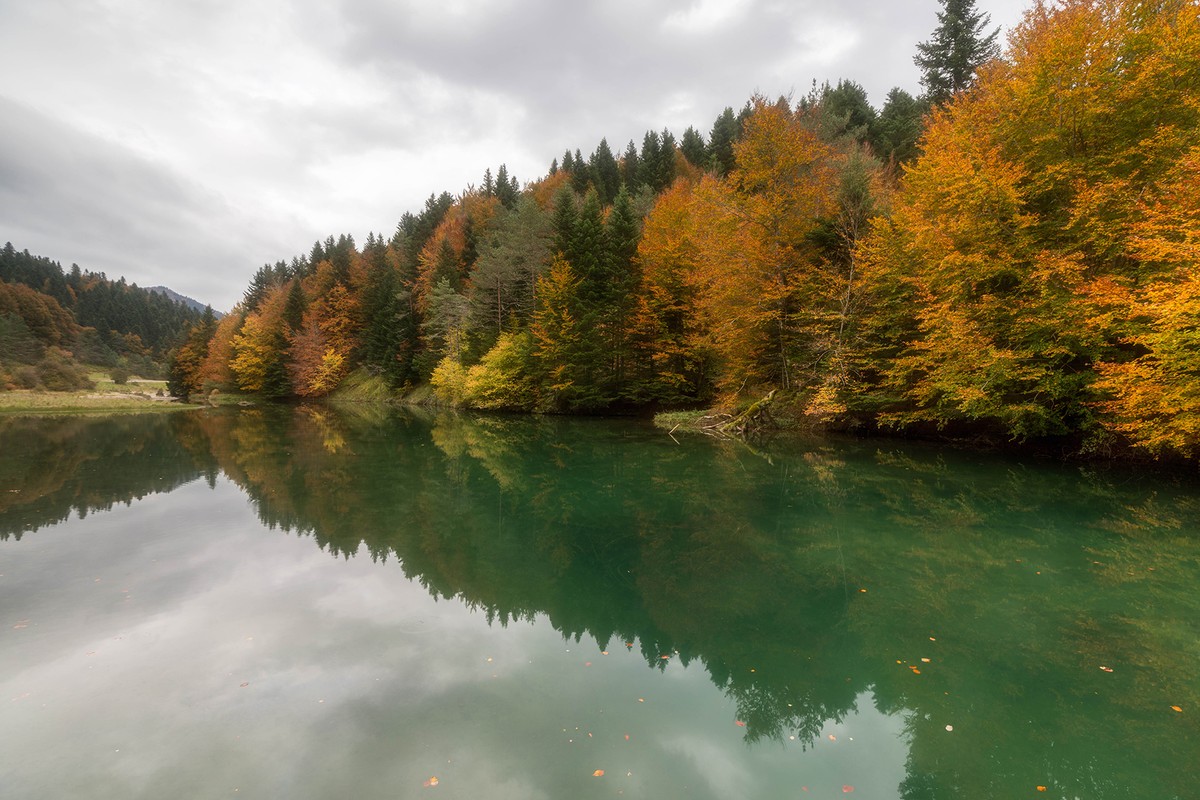
“That’s our claim,” concludes de Diego. “The institutions provide funding for four years, but to see and understand the evolution, it needs to be followed up for a long time.” The article that has now been published is part of the thesis of Julen Bustamante Alonso in the UPV, and another thesis and more articles will be published. It is clear, therefore, that the investigation has been fruitful. As clear as that, however, it is not enough for researchers, for whom Irati is also special.
Buletina
Bidali zure helbide elektronikoa eta jaso asteroko buletina zure sarrera-ontzian


